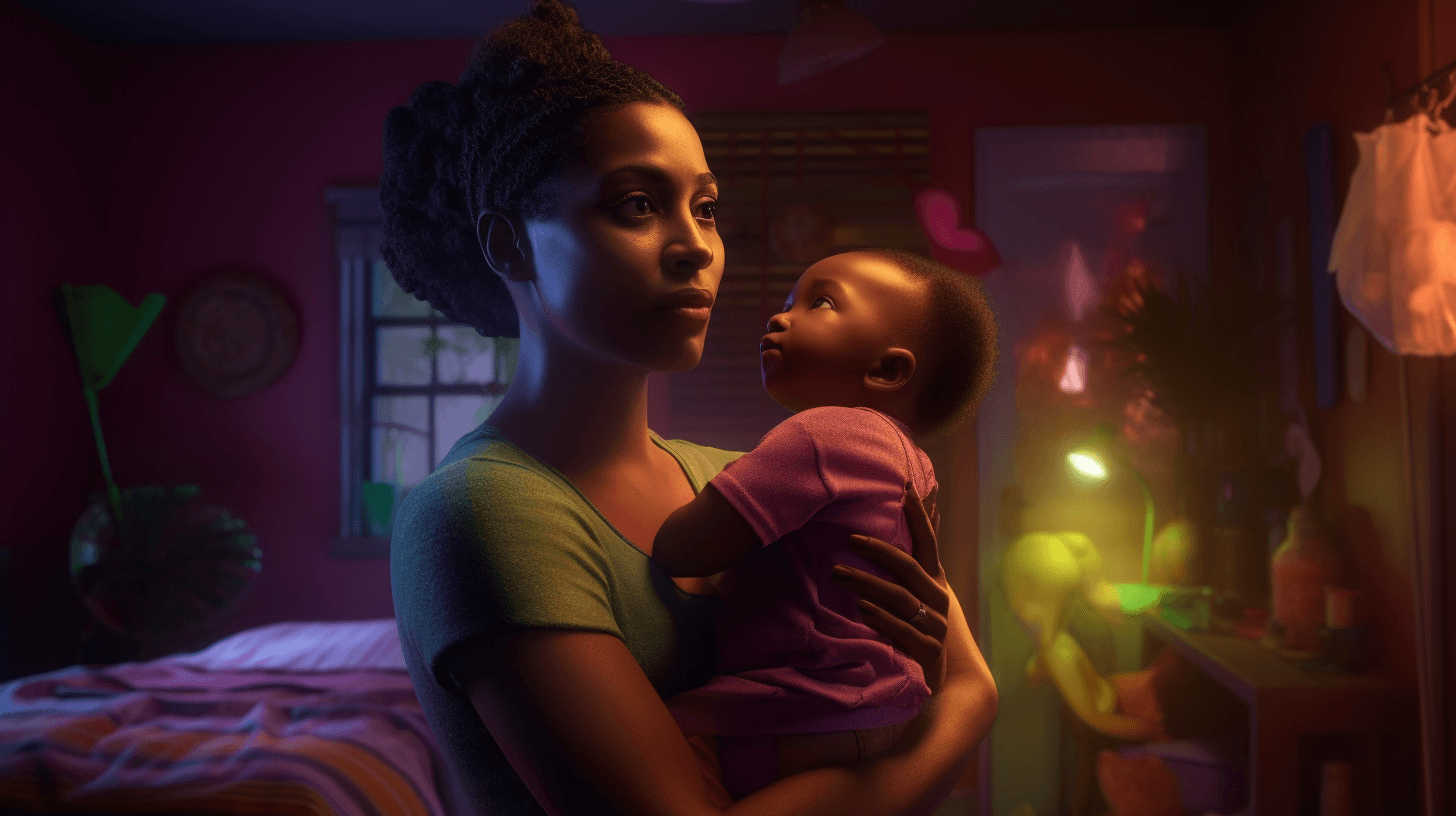🤧🌸🦠 Da Flu, RSV, now HMPV? Wot to know ’bout human metapneumovirus and why it spiked dis spring
Discovered in 2001, da pathogen often affects younger children, older adults and immunocompromised people.
It felt like almost everyone was battling a cold dis winter. Amid a season of coughing, sneezing and runny noses, a string of respiratory viruses were at da forefront of people’s attention, as cases of influenza, COVID-19 and RSV surged across North Texas.
These viruses spiked much earlier than usual, causing a massive wave of hospitalizations, especially in children. But anodah little-known virus — perhaps more quietly — spiked dis spring just as oddahs winded down, according to da Centers fo’ Disease Control and Prevention. 📉🤧💥
Across da country, young children and older adults, who are most vulnerable to HMPV, o’ human metapneumovirus, filled up hospital beds during da virus’s peak in mid-March — when almost 11% of tested specimens came back positive fo’ HMPV. Dis was up from a pre-pandemic seasonal peak of 7% test positivity, according to da CDC. 🏥🌸😷
While it’s hard to say exactly why da virus saw an uptick dis year, it may be in part because of bettah testing capabilities and diagnostics to measure da virus, said Dr. Trish Perl, infectious disease expert at UT Southwestern. In her own practice, she witnessed some adult patients undergoing HMPV. 💡🧪👩⚕️
Dis was also a time when we were still doing a little bit more aggressive surveillance fo’ respiratory illnesses, and so we may have been picking up stuff dat we didn’t really see in da past because we weren’t looking fo’ it,” Perl said. 🕵️♀️🔬👀
Additionally, evah since da COVID-19 pandemic, changes in da environment caused illness to behave differently, Perl said. Ovah da past few years, da seasonality and duration of traditional pathogens has altered. 🌍🔄🦠
“Since COVID, da traditional respiratory virus seasons have been all messed up,” she said. “Two summers ago, we saw a spike in RSV, which we don’t see in da summer.” 🌞📉🌡️
Wot is HMPV? In short, HMPV is a respiratory virus dat resembles a cold. But it’s not entirely new or rare — it was discovered in 2001 and belongs to da same family of viruses dat cause RSV, measles and mumps. 🤧🧬🔬
However, information about how it affects adults is somewhat limited due to a lack of sufficient surveillance systems, Perl said. “It turns out dat da places where it’s well-tracked are generally in children’s hospitals, and sometimes in oncology units,” she said. “So dere’s not enough general information about da virus in adults.” 🏥🚫📊
More recent surveillance data from da CDC shows dat da virus is most active from da late winter to early spring, but it’s not as seasonal as some oddah respiratory diseases, Perl noted. Similar to COVID-19, da pathogen can be spread through respiratory droplets such as coughing or sneezing, close personal contact or touching objects dat contain da virus and den rubbing your nose, eyes or mouth. 🌬️🤲👃
Symptoms resemble dose of a common cold, and in healthy individuals, da virus resolves in around two to four days, Perl said. Dere is no treatment or vaccination available for HMPV. “For da average person, it’s really like a cold,” she said. 🤒🤧❄️
But in more severe cases, the virus can develop into pneumonia. Fatal cases are extremely rare or unusual, often occurring as a result of secondary infections.
“All of dese respiratory viruses can have complications and in certain patients can have pretty severe manifestations,” Perl added. Immunocompromised patients, premature children and transplant patients are all vulnerable to developing severe disease from HMPV. 💔⚠️🌡️
Could the virus spike again? There is a chance the virus could spike again, given the unpredictable nature of illnesses over the past few years, Perl said.
“A lot will depend on what epidemiology the CDC is able to report on,” she said, adding more information can help better guide people on what steps they need to take.
In a post-COVID world, Perl said that as respiratory viruses gain traction, it’s important to continue monitoring them to protect vulnerable groups from developing severe complications.
“This is really nascent in our understanding of this particular virus,” she said. “And we’re going to see a lot more come out, given that this health warning was released.” 🌍👩⚕️🔬
NOW IN ENGLISH
🤧🌸🦠 Da Flu, RSV, now HMPV? Wot to know ’bout human metapneumovirus and why it spiked dis spring
Discovered in 2001, da pathogen often affects younger children, older adults and immunocompromised people.
It felt like almost everyone was battling a cold dis winter. Amid a season of coughing, sneezing and runny noses, a string of respiratory viruses were at da forefront of people’s attention, as cases of influenza, COVID-19 and RSV surged across North Texas.
These viruses spiked much earlier than usual, causing a massive wave of hospitalizations, especially in children. But anodah little-known virus — perhaps more quietly — spiked dis spring just as oddahs winded down, according to da Centers fo’ Disease Control and Prevention. 📉🤧💥
Across da country, young children and older adults, who are most vulnerable to HMPV, o’ human metapneumovirus, filled up hospital beds during da virus’s peak in mid-March — when almost 11% of tested specimens came back positive fo’ HMPV. Dis was up from a pre-pandemic seasonal peak of 7% test positivity, according to da CDC. 🏥🌸😷
While it’s hard to say exactly why da virus saw an uptick dis year, it may be in part because of bettah testing capabilities and diagnostics to measure da virus, said Dr. Trish Perl, infectious disease expert at UT Southwestern. In her own practice, she witnessed some adult patients undergoing HMPV. 💡🧪👩⚕️
Dis was also a time when we were still doing a little bit more aggressive surveillance fo’ respiratory illnesses, and so we may have been picking up stuff dat we didn’t really see in da past because we weren’t looking fo’ it,” Perl said. 🕵️♀️🔬👀
Additionally, evah since da COVID-19 pandemic, changes in da environment caused illness to behave differently, Perl said. Ovah da past few years, da seasonality and duration of traditional pathogens has altered. 🌍🔄🦠
“Since COVID, da traditional respiratory virus seasons have been all messed up,” she said. “Two summers ago, we saw a spike in RSV, which we don’t see in da summer.” 🌞📉🌡️
Wot is HMPV? In short, HMPV is a respiratory virus dat resembles a cold. But it’s not entirely new or rare — it was discovered in 2001 and belongs to da same family of viruses dat cause RSV, measles and mumps. 🤧🧬🔬
However, information about how it affects adults is somewhat limited due to a lack of sufficient surveillance systems, Perl said. “It turns out dat da places where it’s well-tracked are generally in children’s hospitals, and sometimes in oncology units,” she said. “So dere’s not enough general information about da virus in adults.” 🏥🚫📊
More recent surveillance data from da CDC shows dat da virus is most active from da late winter to early spring, but it’s not as seasonal as some oddah respiratory diseases, Perl noted. Similar to COVID-19, da pathogen can be spread through respiratory droplets such as coughing or sneezing, close personal contact or touching objects dat contain da virus and den rubbing your nose, eyes or mouth. 🌬️🤲👃
Symptoms resemble dose of a common cold, and in healthy individuals, da virus resolves in around two to four days, Perl said. Dere is no treatment or vaccination available for HMPV. “For da average person, it’s really like a cold,” she said. 🤒🤧❄️
But in more severe cases, the virus can develop into pneumonia. Fatal cases are extremely rare or unusual, often occurring as a result of secondary infections.
“All of dese respiratory viruses can have complications and in certain patients can have pretty severe manifestations,” Perl added. Immunocompromised patients, premature children and transplant patients are all vulnerable to developing severe disease from HMPV. 💔⚠️🌡️
Could the virus spike again? There is a chance the virus could spike again, given the unpredictable nature of illnesses over the past few years, Perl said.
“A lot will depend on what epidemiology the CDC is able to report on,” she said, adding more information can help better guide people on what steps they need to take.
In a post-COVID world, Perl said that as respiratory viruses gain traction, it’s important to continue monitoring them to protect vulnerable groups from developing severe complications.
“This is really nascent in our understanding of this particular virus,” she said. “And we’re going to see a lot more come out, given that this health warning was released.” 🌍👩⚕️🔬







